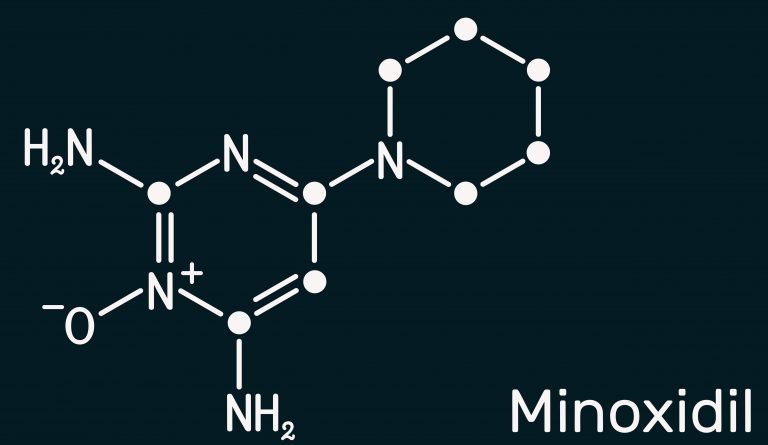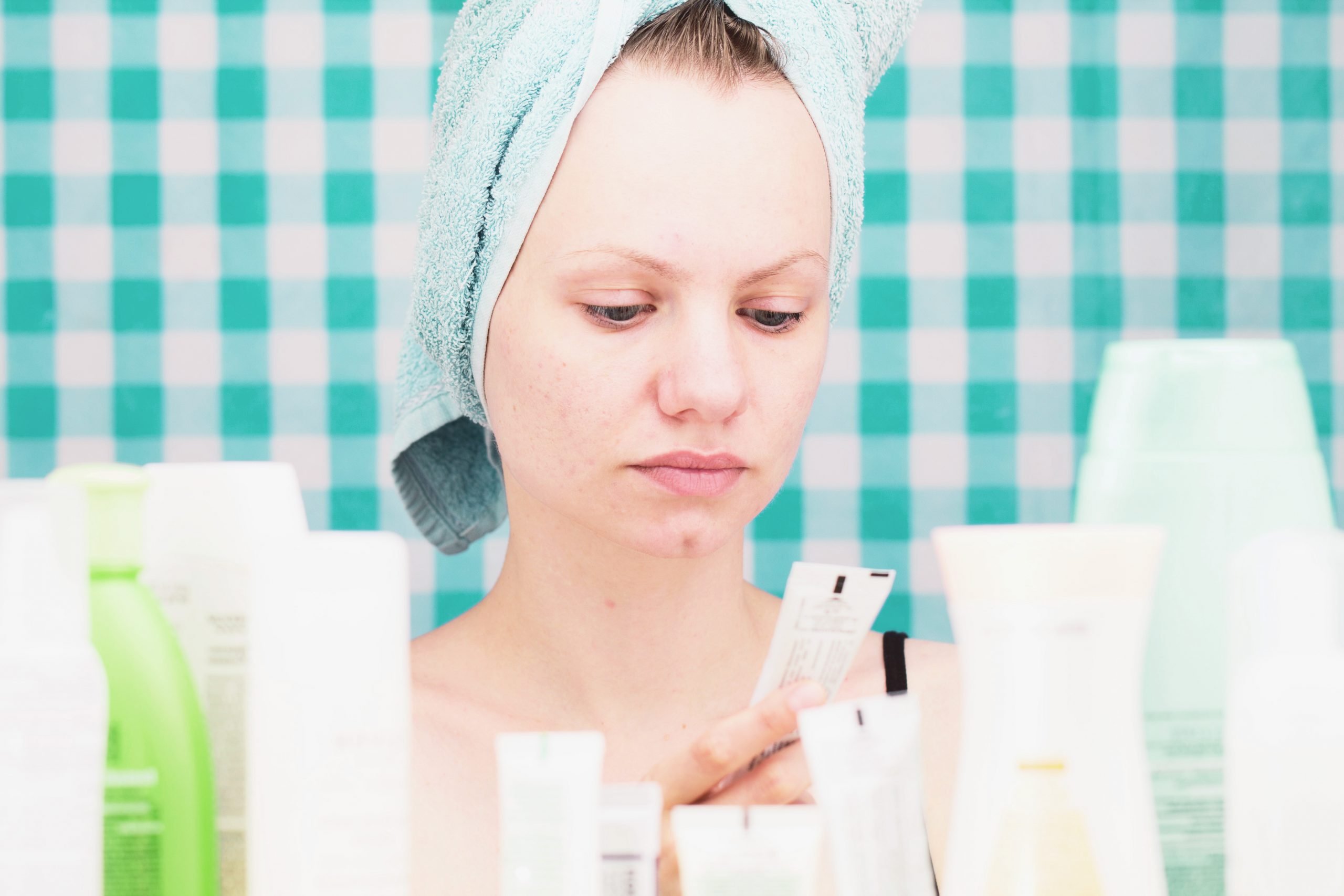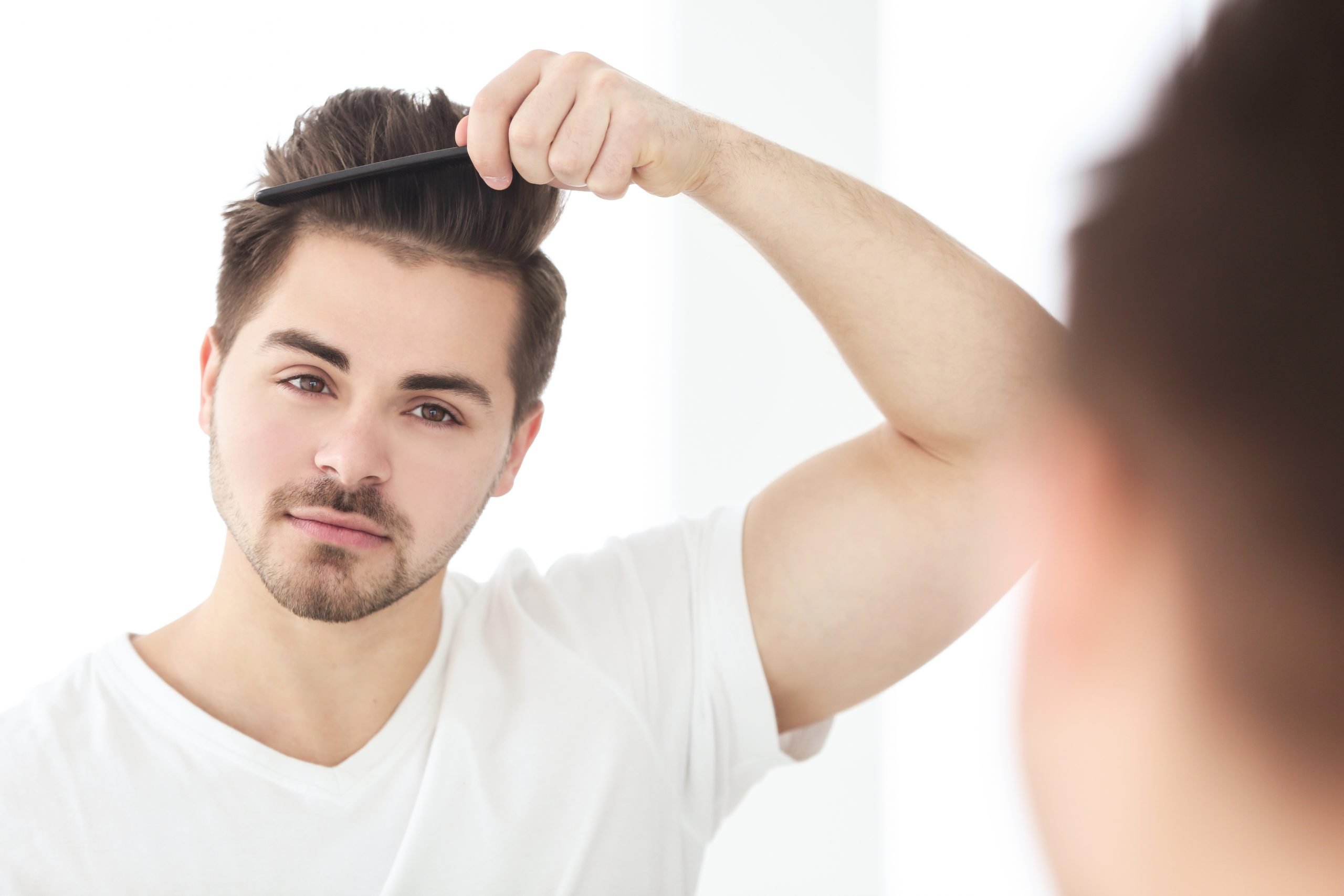
Page Contents
Minoxidil is one hair growth treatment that you have likely heard about at least once. Minoxidil can be found in many different forms, and it is sold by more than a few brands as well. This is one hair treatment that has been out on the market for quite a while.
However, new technologies and studies have led to the creation of newer and supposedly more improved hair loss treatments. The real question about minoxidil should probably be if it really works and how it compares to newer treatments.
The History Of Minoxidil
Minoxidil is by no means a new hair growth treatment. It has been around for quite a while. In fact, minoxidil was first created sometime in the late 1950s. When minoxidil was first formulated, its goal was to serve as an antihypertensive agent.
In particular, minoxidil was tested for treating ulcers. However, it was not shown to be effective for treating ulcers. What these first tests on minoxidil did show, though, was that minoxidil was a good vasodilator.
Vasodilators are great for high blood pressure, which was what minoxidil was being used for after studies in the 1970s. During this time, tests and studies on minoxidil were continued to be done.
It was after another decade of testing that this new product was noticed to have a few side effects. One of these potential side effects was that the minoxidil noticeably increases the subjects’ hair growth. Because of this, even more testing was done in minoxidil.
From there, minoxidil was refined a bit more. By the late 1080s, minoxidil was already out on the market as a hair treatment under the brand name of Rogaine. Nowadays, minoxidil is still used medicinally, but it is more commonly used as a hair treatment to encourage hair growth.
Minoxidil was one of the first proven hair growth products that went out to market. The fact that it is still used today after all this time should give some indication of how trustworthy this product can be. This treatment can be found in many different forms and as both generic and brand-name products.
Almost every year, minoxidil is placed in some new product as the main ingredient. Minoxidil is a tried and true hair treatment method that will probably continue to be used for a long time to come.

How Minoxidil Works
Minoxidil works by the use of potassium channel openers – PCO’s for short. These channel openers open up the channels to your hair, which is the blood vessels that go to your scalp. This opening results in better circulation to your scalp.
Better circulation affects your hair growth in a good way, getting more of the essential nutrients to your hair. PCO’s do this without affecting your hormones. This is unlike some other chemicals which do affect your hormones in one way or another.
However, there is more to how minoxidil works than that. Your scalp needs clear paths going to and from in if your body is trying to get rid of some of that DHT. What you may not know about DHT is that one of the main ways it causes hair loss in through inflammation.
DHT is very irritating to your cells, causing inflammation, which then leads to swelling. Swollen follicles squeeze your blood supply shut. This compounds the problem even more since your blood isn’t able to get to the area to remove the DHT that is causing the irritation.
Eventually, the affected hair follicle will become dormant, losing its hair as it tries to simply focus on surviving. However, if the problem is not treated, that hair follicle will eventually die out completely.
With minoxidil opening up the circulation again, your body can get at the DHT and clean it out. This allows dormant hair follicles to start growing again, though nothing can be done for the ones that are completely dead.
The Forms Of Minoxidil
The most common form of minoxidil tends to be that of a foam or a cream. There are many more forms of minoxidil that range from shampoo to tablets too. Each of these forms has a few advantages and disadvantages to them.
Liquid Form
Liquid and foam are the two most common forms of minoxidil. In the late 1900s, when it was first put out as a hair treatment, minoxidil was first sold as a liquid. It was very well received and is still fairly popular.
However, the problem with liquid is that it can run and drip down into areas you may not want it. Also, propylene glycol is fairly often used in liquid minoxidil. This is a type of alcohol and, as such, it can irritate skin and cause rashes and flaking.
This ingredient does not bother everyone, with some people able to use it without noticing any problems. The liquid does a great job of getting to your scalp and in being absorbed by your scalp as well.
Related Reading
Foam Form
Foam minoxidil was the second form of minoxidil that was sold. Once the makers discovered that the extra ingredient was irritating to some scalps, they decided to find a way around it. Foam minoxidil is almost identical to the liquid form but without the propylene glycol.
For this reason, foam minoxidil tends to be more popular than its liquid counterpart. The foam can sometimes be a little harder to really get to your scalp, and it does not get as good contact with your scalp as liquid minoxidil does. However, it does absorb quite well as it evaporates.
Cream Form
Much later on, minoxidil was put in a cream form. Minoxidil cream has the consistency of a lotion. This keeps the minoxidil on your scalp for a longer period of time, allowing more of it to be absorbed by your scalp.
There is no doubt that minoxidil cream can stay on your scalp longer than either liquid or foams that evaporate fairly quickly. However, sometimes other ingredients in the cream make it harder for your scalp to absorb the minoxidil.
Because of this, the cream minoxidil formulas tend to have a higher concentration of minoxidil then the cream or foam does. While the latter might have 2% or 5% minoxidil. A cream can have as much as 15% to 20% or more.
This increase of minoxidil also increases the risks of the potential side effects. Because of this, minoxidil creams are not FDA-approved. Some haircare brands do sell minoxidil cream, though, along with a warning from the FDA.
This form of minoxidil has a lot of debate on it. It does work very well for keeping the minoxidil formula on your scalp and is easy enough to apply to bald areas. Areas on your scalp that have hair, however, can make it really hard to get the cream past your hair and to your scalp.

Shampoo Form
Minoxidil shampoo is one of the newer forms of minoxidil. These are found with mostly 2% and 5% minoxidil solutions though you may find one that has a different strength.
Minoxidil shampoos are applied the same way as any normal shampoo. The only difference here is that you usually need to let this type of shampoo sit in your hair for a few minutes. This allows the minoxidil to work its way into your scalp.
Unlike the other minoxidil options, this one is a favorite because it can be used by the busiest of people. You will not have to take the time out of your schedule to apply something to your scalp. Simply use it whenever you usually shower.
Tablet Form
Minoxidil in tablet form is one of the least common ways of using minoxidil for your hair. Firstly, since it is not applied directly to your hair, your hair does not get as much of the benefits of it. Meanwhile, the rest of your body will experience more of the effects, including the side effects.
Also, minoxidil tablets are usually prescribed by doctors for certain medical conditions. When doctors prescribe minoxidil tablets, they often also prescribe one or even two other medications to prevent serious side effects. One of these is usually a diuretic in order to prevent serious amounts of fluid accumulation. Also worth reading: Can Antibiotics Cause Hair Loss: What Medications Can Cause Hair Loss?
The Strengths Of Minoxidil
There are two different strengths of minoxidil that you will often see. These are: 2% and 5% solutions, though you may find 10% solutions. Each of these strengths has different advantages and disadvantages. The higher the percentage of the solution, the more concentrated the minoxidil is.
The 2% and 5% have been around the longest, have had the most studies done on them, and are the only two approved by the FDA. However, based on the studies that compared the 2% with the 5% minoxidil, it is reasonable to assume that the 10% minoxidil may be even better.
One study done on these two in 2002, for example, used hundreds of participants and lasted 48 weeks. After establishing a baseline, the subjects were examined every 4 weeks. At every test, the 5% minoxidil solution came out on top.
A similar study of these two minoxidil strengths was done in 2004, this time with women instead of men. Like before, the 5% minoxidil solution did better. Therefore, while neither of these has been compared in a study to the 10%, it stands to reason the latter would give even better results.
However, this is not to say the results of 10% minoxidil will be twice the results of 5% minoxidil. This is the law of diminishing returns. At some point the results will plateau, increasing the risks without increasing the benefits.
If you are getting results with the 5% minoxidil solution and you simply want more, you can switch to 10%. Also, the stronger solution of minoxidil tends to show results slightly faster than the weaker concentrations.
A higher concentration of minoxidil is harder on your scalp, being much more likely to cause redness. However, this higher concentration also means that the minoxidil will likely be that much more effective.
Side Effects Of Minoxidil
 You can sometimes use more minoxidil than is recommended, especially when in a shampoo form, to get faster results. However, too much minoxidil will increase the likelihood that you will experience one or more of the various side effects that can accompany it.
You can sometimes use more minoxidil than is recommended, especially when in a shampoo form, to get faster results. However, too much minoxidil will increase the likelihood that you will experience one or more of the various side effects that can accompany it.
Some of the mild potential side effects of minoxidil are rashes, redness, itching, headaches, slight nausea, and dizziness. Severe nausea can make you actually vomit, and standing too quickly when dizzy can lead to passing out entirely.
Other random but fairly common minoxidil side effects include bloating, numbness in hands and feet, and breast tenderness in both men and women. Your eyes can start burning even without getting the minoxidil in your eyes, and a severe enough rash can peel and blister.
If you start having pain when you breathe, extreme shortness of breath, chest pains, or a rapid heartbeat, you should stop using the minoxidil immediately and should call your doctor. You may need to go to the emergency room, but at the very least you should have your heart checked out.
While taking minoxidil, you should check your heart rate and your blood pressure often. Your doctor may recommend giving you a regular EKG for safety. You should also weigh yourself regularly since minoxidil can cause water retention and weight gain.
If you gain more than around 5 pounds in just a few days, you may need to call your doctor. You may also see some swelling in your legs, ankles, feet, and even in your hands due to fluid retention. Fluid can also collect in your lungs.
Finally, sometimes minoxidil can cause an allergic reaction. So, if you suddenly start experiencing hives, difficulty breathing, and severe and sudden swelling, you should seek immediate medical attention. These are only the most common minoxidil side effects.
Medical Conditions And Health Concerns
There are certain medical conditions that you should be hyper-aware of if you are interested in taking minoxidil. Depending on your health and the form of minoxidil you plan on using, you should consider consulting with your doctor first.
During this consultation, you should tell your doctor if you have had any chest pains, any recent heart attack, any problems with your kidneys, asthma, migraines or headaches, or if you are prone to epilepsy or have another seizure disorder.
Any one of these conditions can potentially increase the risk of taking minoxidil. This is why you should talk to your doctor about it. Also, there has been no proof that minoxidil is safe to take while pregnant. However, it has been proven that minoxidil can pass into breastmilk and can harm a baby.
If you have pheochromocytoma, which is an adrenal gland tumor, then you should definitely not be taking any form of minoxidil. The three other main conditions that mean you should avoid minoxidil are: fluid retention/congestive heart failure, ischemic heart disease, and renal failure/dialysis.
Finally, it is entirely possible to have an allergic to minoxidil. If you have never used anything with minoxidil before, you should test some of the minoxidil out on a small area of skin. The inside of your forearm is a great place for this.
If your doctor is prescribing you a minoxidil tablet and things you may be allergic, they may have you take your first dose of it in their office so that they can watch for a reaction. If you missed one dose of minoxidil, you should just entirely skip it, especially if you are getting close to the time you are due for your next dose so that you don’t overdose yourself.
Medications And Diet
Certain medications should be avoided if you are using minoxidil as minoxidil can react in some way with them. Cough or cold medicines that contain the decongestant phenylephrine are one example of something you should avoid.
In fact, there are a total of 157 drugs that are known to interact negatively with minoxidil. Using the Drug Interaction Classification, only 3 of these are counted as major drug interactions. However, 152 of these are moderate drug interactions, while the remaining 2 are minor drug interactions.
Major drug interactions indicate that you should never, under any circumstance, combine two things. Moderate drug interactions indicate that you should usually avoid mixing the two. However, under certain circumstances, and with your doctor’s approval, you can carefully attempt to use both.
Meanwhile, minor drug interactions are considered fairly safe. You should try to avoid them still since they do bring a definite increased risk of side effects.
Finally, minoxidil may also cause you to need to reduce the amount of salt in your diet. Potassium may also need to be cut back on, and you should not have any potassium or salt substitutes without checking first.
Advantages Of Minoxidil
Since minoxidil is approved by the FDA, you do not need to get a prescription in order to use it. This allows you to buy it online, or even from your local store, without having to pay for a doctor’s appointment.
Minoxidil’s ability to increase your blood flow can be helpful no matter what the reason is that you are losing your hair. This is no doubt why minoxidil is still used so often today, because it is known to get results.
Minoxidil can be used by either gender, both men and women having new growth when using minoxidil. What’s more, minoxidil can be used in combination with other hair loss treatments without any problems. It can even help the absorption of the latter into your scalp.
Finally, minoxidil is easy to get, fairly inexpensive, and it is easy to use. The fact that you can get minoxidil in a variety of forms allows you to choose the form that best fits with your schedule.

Disadvantages Of Minoxidil
Perhaps the main disadvantage of minoxidil are the many possible, and sometimes quite serious, side effects. In addition to reacting to certain medications, minoxidil can also react to the chemicals in hair dyes and hair perms.
That said, you should skip one or two doses of topical minoxidil around the time of your perm or when coloring your hair. While it doesn’t always do so, the minoxidil could result in an off-color or irritate your scalp.
Just because minoxidil is known to be effective, this does not guarantee it will work for everyone. Some people will simply have no beneficial hair growth effects when they use minoxidil. Other times the result is so minor so as to be barely perceptible.
Another disadvantage to minoxidil is that the new growth is dependent on the minoxidil. In other words, once you stop applying the minoxidil, all the new hair growth that you got from it will fairly quickly fall back out again. This will put you exactly where you were at beforehand.
Finally, since minoxidil does not affect your hormones, this also means that it will not block the DHT. It will help prevent the DHT from strangling your follicles, but the DHT will still be able to adhere to your scalp. Therefore, you may still go bald eventually, even with the use of minoxidil.
Final Notes
Minoxidil has plenty of advantages and disadvantages to it, but sometimes these tend to vary. For example, some people find that minoxidil starts giving them results in as little as 3 to 6 weeks. This is pretty quick to start regrowing hair, even compared to other hair loss treatments.
However, some people may not notice results with minoxidil until closer to 4 months of faithful use has passed. This is a long time to wait for minoxidil to work. It is even harder on your pocketbook if, after all that time, you still end up with nothing to show for it.
Whatever form and strength of minoxidil that you choose to use, make sure you let it dry completely before you style it or go to bed and sleep on it. Wash any minoxidil off your hands immediately, even if you are not certain if you got any on you.
Finally, don’t put any minoxidil on any skin that is damaged. This includes skin that is simply red or irritated, but it is especially true for any skin that is cut. This even includes areas of your scalp that might be sunburned.
Applying minoxidil to broken or irritated skin can result in the minoxidil leaking into your bloodstream. Once in your bloodstream, the minoxidil can cause any number of side effects. It should go without question that microneedling should be avoided while using minoxidil on your scalp.






